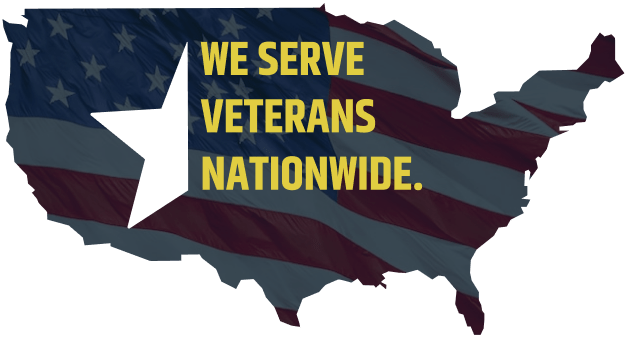
Establishing Service Connection for Veterans’ Disabilities
We can help you meet VA requirements for your specific medical conditions
Your ability to obtain veterans’ disability benefits for a medical condition that has left you disabled hinges on whether you can show that you sustained the underlying injury or illness due to your military service. This is known as “Establishing Service Connection” or “Determining Service Connection.”
The VA recognizes five categories of service connection for disabling injuries or illnesses. Within each category, there are multiple variables the veteran must take into account.
For many specific disabilities — including for Post-Traumatic Stress Disorder (PTSD) or Certain Disabilities Associated With Gulf War (GW) Service — there are additional, separate explanations of requirements for determining service connection.
The disabled veteran or a loved one of a vet seeking VA benefits can be easily dismayed by the prospect of figuring out what’s required to establish a service connection for a claim. Though the complexity is necessary to meet all potential needs of disabled veterans, it also leads to many legitimate claims being denied or veterans’ disabilities being incorrectly rated.
VA benefits advocates can guide you through the VA bureaucracy to the disability benefits you deserve. Our objective is to see disabled veterans obtain the maximum benefit they are entitled to, and for them to get it FAST and with as little burden as possible on the vet or their family. Contact us today to get started with your case.
How Disabled Vets Establishes Service Connection for Benefits
There are five ways a veteran may establish a service connection (SC) for their disability in a claim for veterans disability benefits:
- Direct Service Connection — In this case, the vet’s disease or injury was clearly sustained while in service. Evidence included in a claim would establish the incident causing the illness or injury, the ongoing disability, and the connection between the two. For example, a soldier who lost use of an arm in a firefight would need to provide medical records from the service as well as the VA and/or civilian doctors from the date of the battle onward, and military unit records or STRs (survey team reports) that show he and his unit or she and her unit were engaged in the firefight.
- Presumptive Service Connection — Certain diseases or conditions are presumed to have been incurred in or aggravated by service if they cause disabling symptoms within a time frame specified for each, even when there was no evidence of the disease while in the service. In addition to medical records citing the disease, service records would have to indicate potential exposure that would result in the disease. Some conditions have “presumptive periods” for which exposure was likely, such as radiation exposure. Multiple conditions provide presumptive service connection, including certain:
- Chronic diseases
- Tropical diseases
- Conditions afflicting former prisoners of war (FPOWs)
- Exposure to ionizing radiation
- Exposure to certain herbicide agents (for example, Agent Orange)
- Diseases based on full-body exposure to mustard gas or Lewisite
- Diseases associated with service in the Southwest Asia theater of operations
- Diseases associated with service in Afghanistan
- Amyotrophic lateral sclerosis (ALS) with at least 90 days of continuous active service
- Other organic diseases of the nervous system, for example, carpal tunnel syndrome, peripheral neuropathy, migraine headaches, sensorineural hearing loss, glaucoma, tinnitus, etc.
- In-Service Aggravation of Pre-Service Disability — This refers to a condition the service member had upon enlisting and something that occurred during service that made the condition worse and, eventually, disabling. Such a claim fares better if the condition was noted in medical records when the veteran entered service. But service connection can be established without such prior documentation if evidence of aggravation during service is part of the claim.
- Secondary Service Connection, Including by Aggravation — A secondary service connection may be identified for a disability that has been caused by another service-connected condition. This includes the increased severity of a non-service-connected (NSC) disability that can be attributed to aggravation by a service-connected disability, but not to the natural progression of the NSC disability. For example, a veteran who was treated for tuberculosis while in the service (SC) may later suffer hearing loss (NSC), which may be linked to the use of second-line injectable anti-TB drugs which are known to be associated with hearing loss. However, the veteran will need to submit medical records that establish a baseline level of disability for a claim for secondary SC that is based on aggravation of a NSC disability by an SC disability.
- Service Connection for Congenital, Developmental or Hereditary Disorders — Congenitalor developmental defects are normally static, structural or inherent body abnormalities present at birth that will not improve or deteriorate on their own. Examples include fused vertebrae, atrial septal defect (a hole in the wall between the heart’s upper chambers), and pectus excavatum (breastbone sunk into the chest). Examples of developmental or hereditary disease include retinitis pigmentosa (damage to the retina), polycystic kidney disease, sickle cell disease (a blood disorder), or Huntington’s disease (a progressive brain disease). Service connection may be established if medical records show that pathological signs or symptoms of such disorders developed after entry into active service. A hereditary disease that had manifested some symptoms before the vet entered active service may be found to have been aggravated during service if it progressed during service at a rate greater than normally expected according to accepted medical authority.
Your service connected disability may be easily established among the five categories above through service and medical records that you possess or can readily obtain. For many vets, the task of categorizing and documenting their service connected disability is not a clear-cut task.
Many veterans have multiple disabling conditions, each of which must be documented and explained to establish service connection and ensure that all available benefits are received.
Because we have years of experience establishing service connection for disabled vets, we are familiar with the issues that are considered when the VA examines claims.
Our advocates work with disabled veterans to ensure that original claims are complete in order to secure the maximum benefits possible. We also help disabled vets and their families reopen or appeal denied claims, or develop new or secondary claims, all with the objective of achieving the highest disability rating, and the most compensation, available to them.
For many disabled veterans and their families, the most valuable service Disabled Vets provides is offering trusted advice and assistance as they deal with the VA bureaucracy. We can do this for you, too. You do not have to go it alone.
We Can Work to Establish Service Connection for Your Veterans Disability
If you qualify for veterans disability benefits, you probably need this monetary assistance right away. A benefits claim that clearly establishes a service connection for the applicant’s disabilities will move forward faster toward approval.
With the experienced and caring assistance of our advocates, you can be assured of a benefits claim that meets VA requirements for approval. We want you to get ALL of the benefits you deserve as FAST as possible.
We know what you are going through and we know what the VA requires of you. We can take the burden of meeting the VA’s technical requirements off of your shoulders and put it in the hands of experienced professionals.
Don’t go it alone. Call Disabled Vets today.


 Establishing Service Connection for Veterans’ Disabilities
Establishing Service Connection for Veterans’ Disabilities
